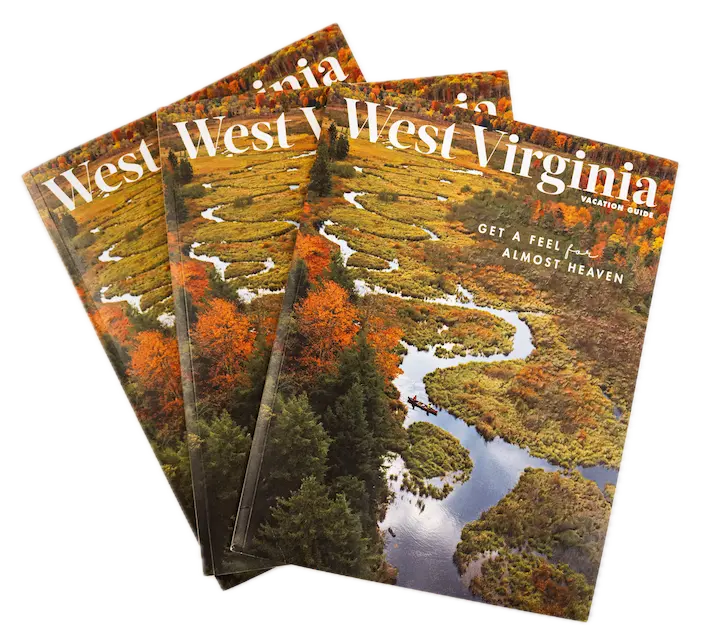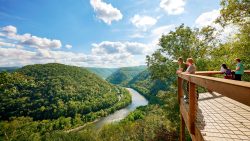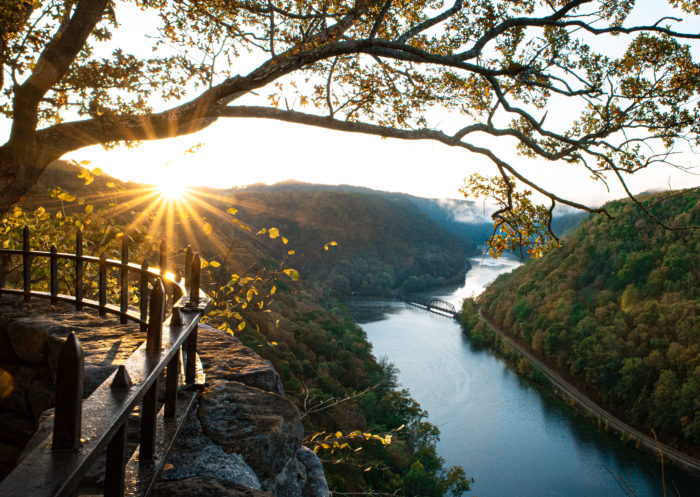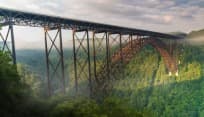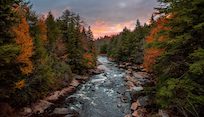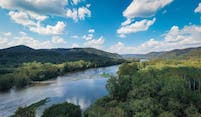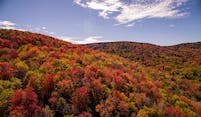Parks with a past: History’s most notable mountain landscapes
Of the prestigious U.S. National Parks, there are “scenic” parks, and there are “historic” parks. They could not be more different, but are both National Parks.
In West Virginia, we have plenty of historic parks that are nonetheless incredibly scenic and beautiful in their own right. That’s just one of the benefits of living in this wild, wonderful state— beautiful scenery everywhere!
Here are 5 of the most profound historical landscapes in the Mountain State
1. Harpers Ferry National Historic Park
The confluence of the Shenandoah and Potomac rivers in the Eastern Panhandle has always been a place of historic significance, since these rivers were key transport routes from the Appalachians toward Virginia. Harpers Ferry’s major historical moment was in 1859 when abolitionist John Brown led a raid on an armory here, hoping to arm and encourage slave revolutions in the area. This raid was unsuccessful and Brown was executed, but it was a key event leading to our nation’s Civil War.
Today, you can hike around beautiful trails and bridges, catching great viewpoints of the 2 rivers. Harpers Ferry is also where the famous Appalachian Trail crosses through the Mountain State, and the trail’s headquarters are here, too. Nearby buildings have been historically preserved, and the park puts on trade workshops for visitors interested in things like historic bread and pie making or tinware.
2. Carnifex Ferry Battlefield State Park
Located high above the Gauley River in Nicholas County, this park was the location of a key battle that determined West Virginia’s eventual secession from the Old Dominion to join the Union North. You can walk through manicured lawns in the battlefield to uncover old cannons, or if you’re a bit more adventurous, take some of the trails to overlooks or even down to the Gauley River several hundred feet below.
3. Cass Scenic Railroad State Park
Located along the beautiful Greenbrier River in Pocahontas County, the town of Cass is quaint and beautiful on its own. You can rent restored company houses from when this was a key lumber town, and the entire town seems to revolve around the historic railroads. After you’ve wandered around town, get ready for the high point of this park– a scenic ride on a restored coal train as it climbs steep 11% grades up into the high country of Monongahela National Forest.
4. C&O Canal National Historic Park
Most of this park, named for the Chesapeake and Ohio Canal, is located on the Maryland side of the Potomac River in the eastern Panhandle. But the canal itself– which was built to allow boat traffic to bypass the falls of the Potomac between Washington D.C. and Cumberland, MD– certainly benefited West Virginia through its history.
Today, you can walk the trail that follows the canal’s old towpath, visit old restored buildings, or even ride in historic replica boats pulled by mules along the canal.
5. National Coal Heritage Area
In its heyday, West Virginia coal dominated U.S. markets, and the culture of coal mining was a deep part of West Virginia life. We are still proud of this heritage, and in 1996 a huge area across 13 southern West Virginia counties was designated as a National Heritage Area. You can drive along the 187-mile “Coal Trail,” visiting historic towns, company stores and mines along the way.
Don’t miss specific points of interest like the Exhibition Coal Mine in Beckley and Tamarack Visitor’s Center.
6. Blennerhassett Island State Park
In 1798, an Irish aristocrat named Harman Blennerhassett began building a huge colonial-style mansion on an island in the Ohio River near Parkersburg, WV. He crafted a true outpost of civilization and refinement in what was then a wilderness. Unfortunately for Blennerhassett, he was accused of treason in an ill-fated land scheme with Aaron Burr, and in 1811 his mansion burned to the ground.
But in 1973 the mansion was rebuilt on its original foundations, in an excellent example of historical research and reconstruction. Today, you can visit the island, the mansion, and surrounding grounds and gardens in much the same form as they were in the 18th and 19th centuries, complete with period plants and ornaments. If you really want to get the full experience, reach the island on a historic stern-wheeled boat ride from Parkersburg.
7. Wheeling National Heritage Area
Although most of West Virginia has long been defined by mining, the Northern Panhandle town of Wheeling has always owed its existence to a different economy and environment: rivers, shipping and more northern industry– notably a nail factory. Because of this, the entire city is designated as a National Heritage Area and many historic structures, like a beautiful 1849 suspension bridge, are preserved for visitors to enjoy.
To get the full dose of river history here, visit Wheeling during its September Sternwheel paddleboat festival.
How many of these historic parks have you visited?
This post was last updated on July 23, 2020
